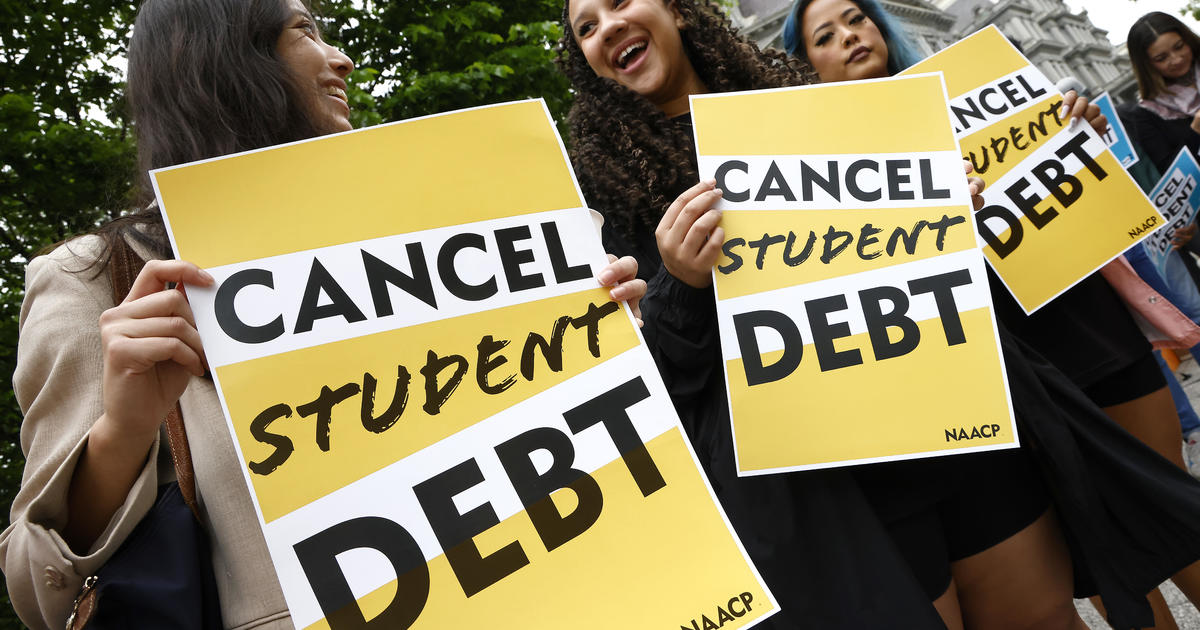This week marks a significant milestone as over 800,000 student loan borrowers will finally have their loans discharged, relieving them of billions of dollars in debt. This move comes after the Biden administration’s recent announcement of student loan forgiveness for 804,000 borrowers, who collectively hold $39 billion in federal student loan debt. These borrowers have been part of income-driven repayment (IDR) plans for more than two decades, but they have not received the credit they deserved under these plans, according to a statement from the White House. President Joe Biden emphasized the importance of rectifying this issue, stating that “hundreds of thousands of borrowers weren’t accurately getting credit for student loan payments that should have delivered them forgiveness under income-driven repayment plans.” Fortunately, this week, they will witness the cancellation of their student debt.
To ensure borrowers are informed about the loan forgiveness process, loan servicing companies have begun sending out emails notifying them of the debt forgiveness. It’s crucial for borrowers to keep an eye out for these emails. In the meantime, let’s explore the reasoning behind the focus on borrowers enrolled in IDR plans and the flaws in the system that have caused them to miss out on loan forgiveness.
IDR plans operate by calculating monthly repayment amounts based on the borrower’s income. In some cases, this payment can be as low as $0 for individuals with no income. According to the Department of Education regulations, student loan borrowers enrolled in IDR plans are technically eligible for loan forgiveness after making 240 or 300 monthly payments, depending on the plan type. This includes individuals with monthly payments as low as $0.
A review conducted by the Education Department revealed significant flaws in the IDR payment-tracking procedures, raising concerns that borrowers were not receiving proper credit towards loan forgiveness. Moreover, the department’s evaluation of Federal Student Aid exposed instances where loan servicers placed struggling borrowers into forbearance, a violation of DOE rules. These shortcomings prompted the Biden administration to take action and address the failures of the system.
On July 14, the Department of Education announced that borrowers who have completed either 20 or 25 years of qualifying monthly payments would receive notices confirming the cancellation of their debt. U.S. Secretary of Education Miguel Cardona acknowledged the long-lasting impact of a broken system, stating, “For far too long, borrowers fell through the cracks of a broken system that failed to keep accurate track of their progress towards forgiveness.”
This federal relief package will completely erase student loan debt for more than 614,000 individuals, marking an incredible milestone in alleviating the financial burden carried by countless borrowers. While the Education Department has yet to respond to inquiries regarding this matter, it is clear that substantial progress has been made.
Moving forward, it’s important for borrowers to understand whether they qualify for the new student loan forgiveness. While many borrowers in IDR plans celebrate the debt relief they are receiving, millions of Americans will soon have to resume making payments on their student loans after a hiatus of over three years. Interest will begin accruing on September 1, and repayments will commence in October.
Approximately 43.5 million Americans currently hold student loans, with an average debt of $37,787 per borrower, according to Federal Reserve Bank of New York data. Last year, President Biden pledged to cancel up to $20,000 in student loan debt for millions of Americans, but these plans were halted by the Supreme Court in June, preventing any discharges. For those considering skipping payments, alternative options, such as the new Saving on a Valuable Education (SAVE) plan, exist. This income-driven repayment program, launched in July, aims to provide borrowers with relief from the pitfalls of traditional IDR plans, including high-interest rates. The SAVE program can potentially halve monthly payments or even reduce them to $0, enabling borrowers to save up to $1,000 per year, according to the Biden administration.
In conclusion, the student loan forgiveness initiative undertaken by the Biden administration is a significant step towards addressing the flaws and historical failures of the student loan system. With the discharge of loans for hundreds of thousands of borrowers, individuals burdened by student debt can finally find some relief. However, it is crucial to remain vigilant for updates and communication from loan servicing companies regarding the loan forgiveness process. Additionally, borrowers should explore available options, such as the SAVE program, to manage their repayments effectively.
Denial of responsibility! VigourTimes is an automatic aggregator of Global media. In each content, the hyperlink to the primary source is specified. All trademarks belong to their rightful owners, and all materials to their authors. For any complaint, please reach us at – [email protected]. We will take necessary action within 24 hours.


